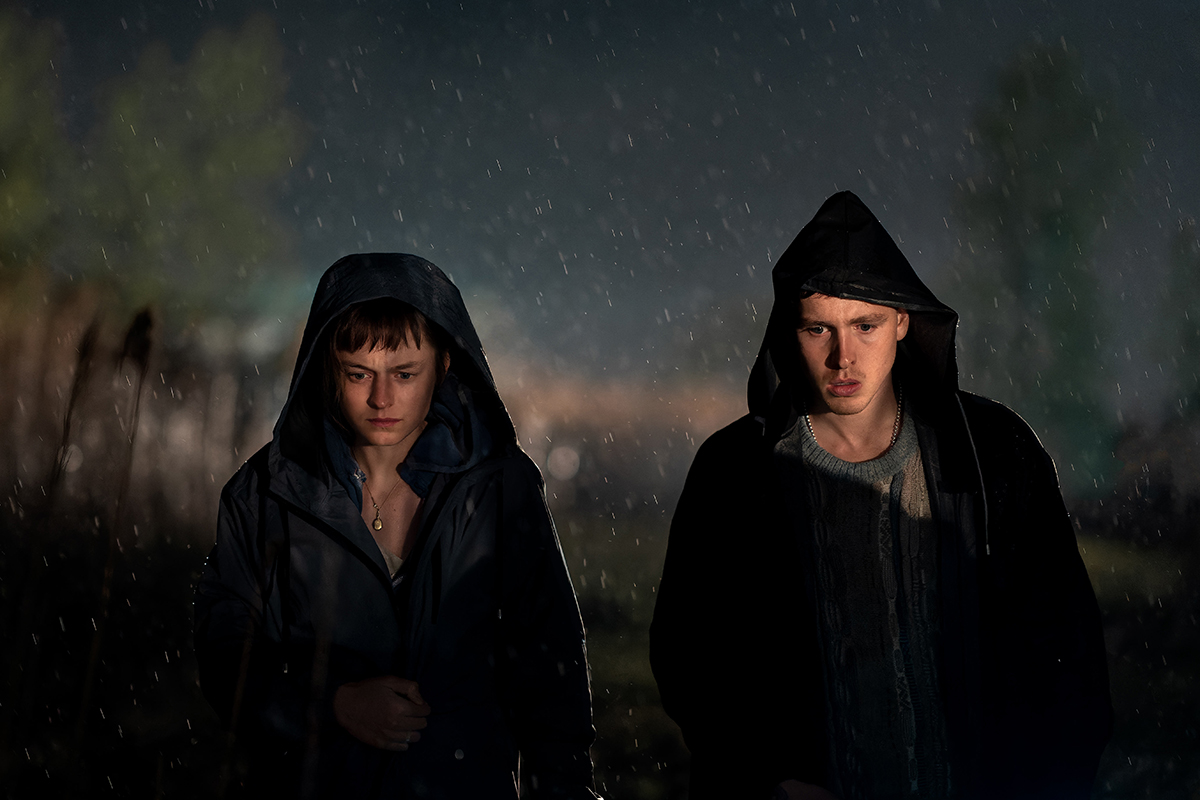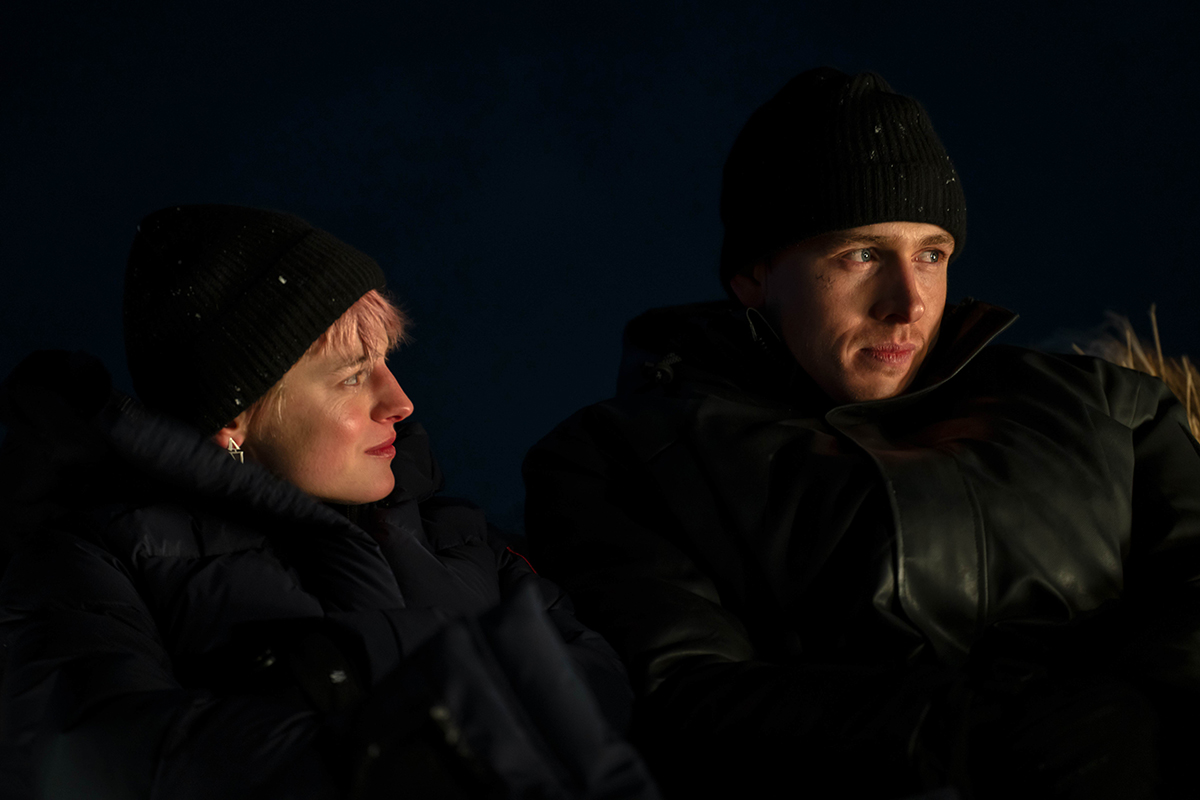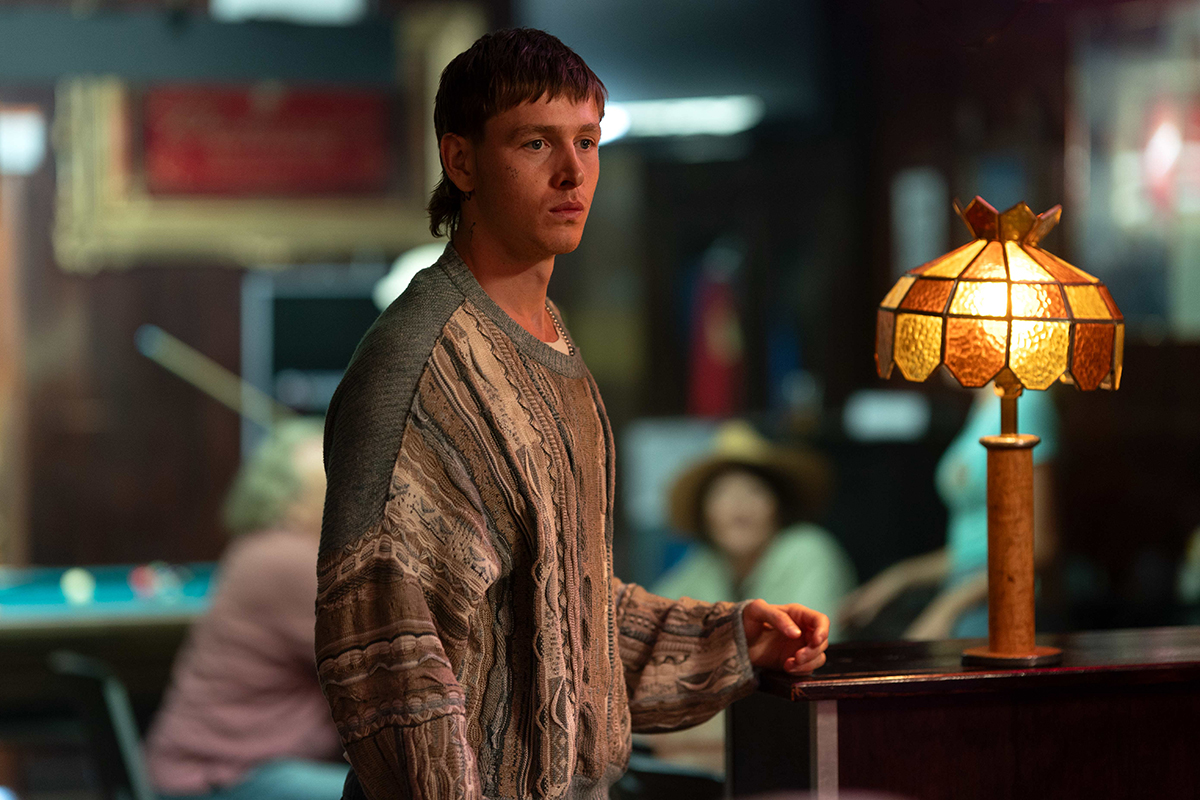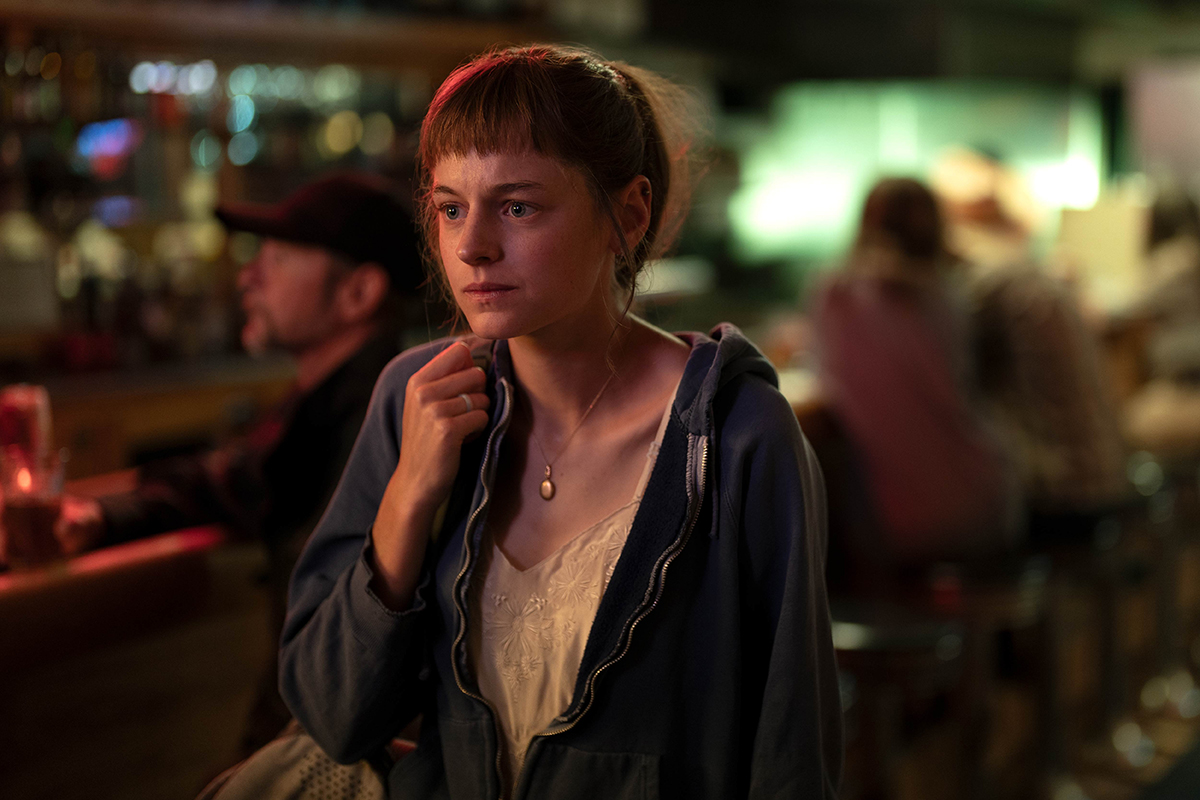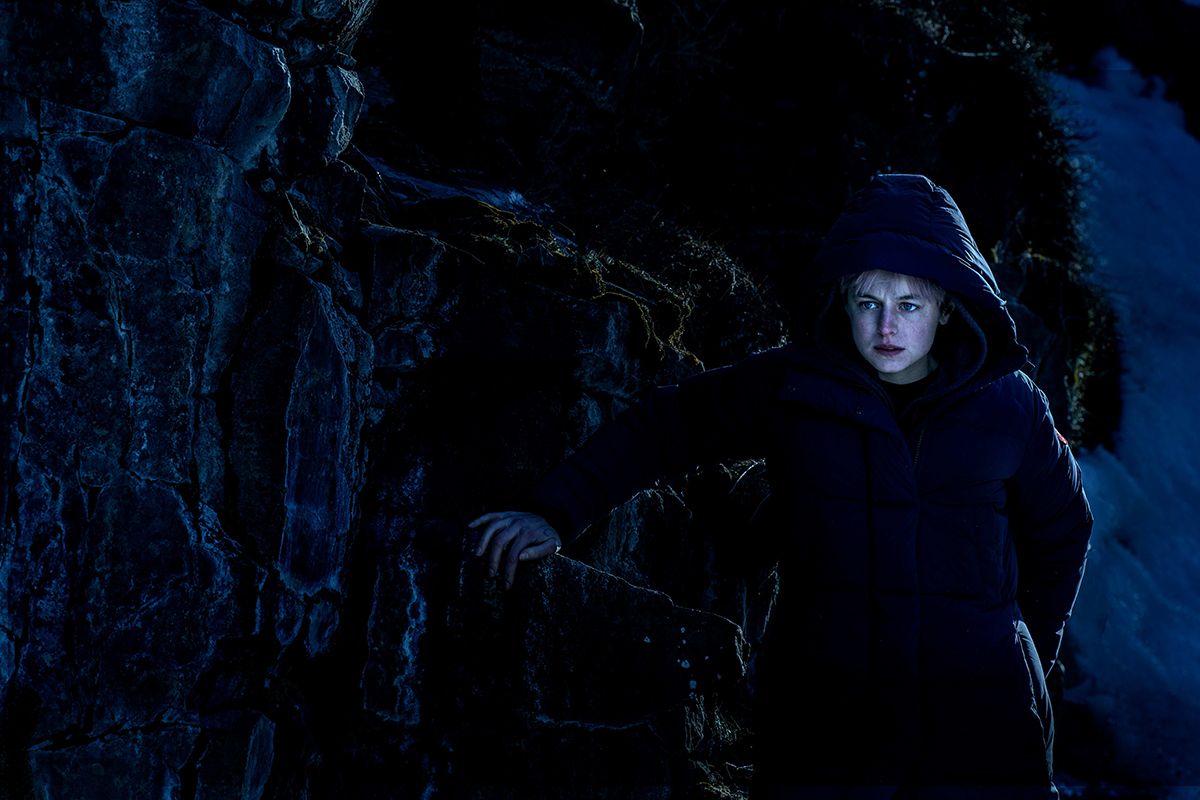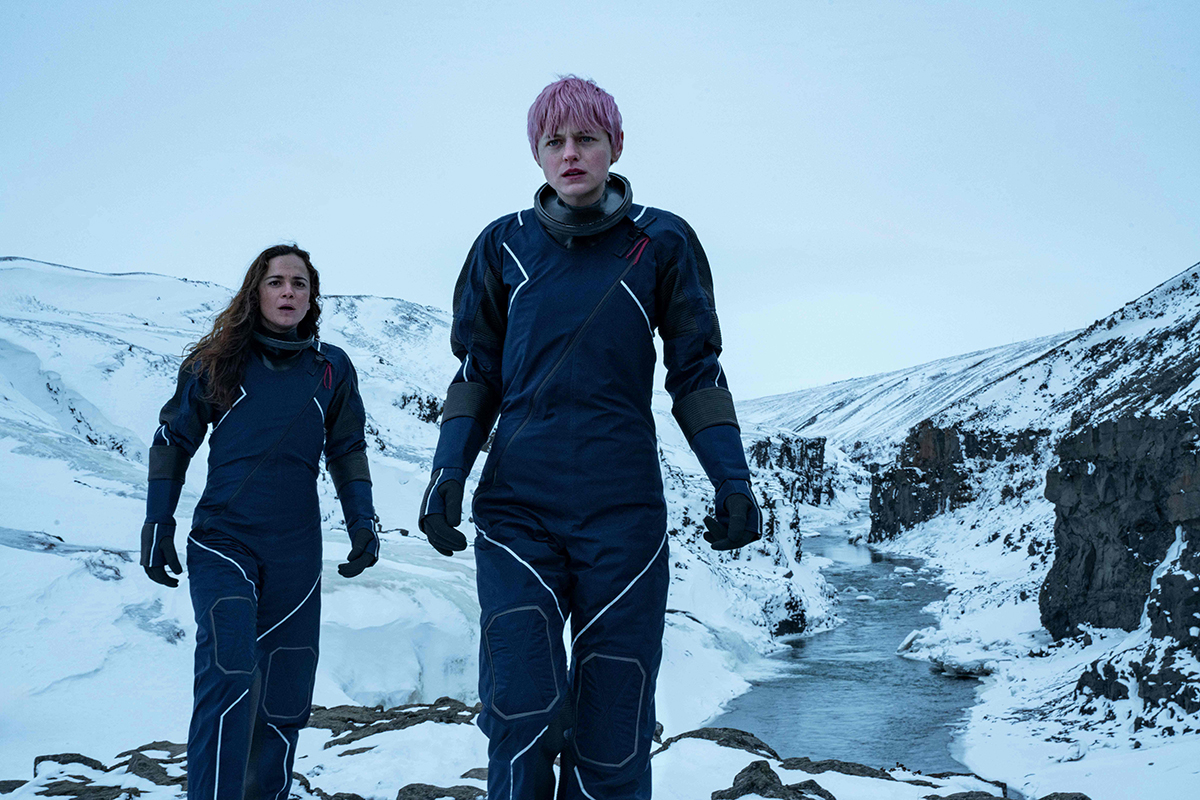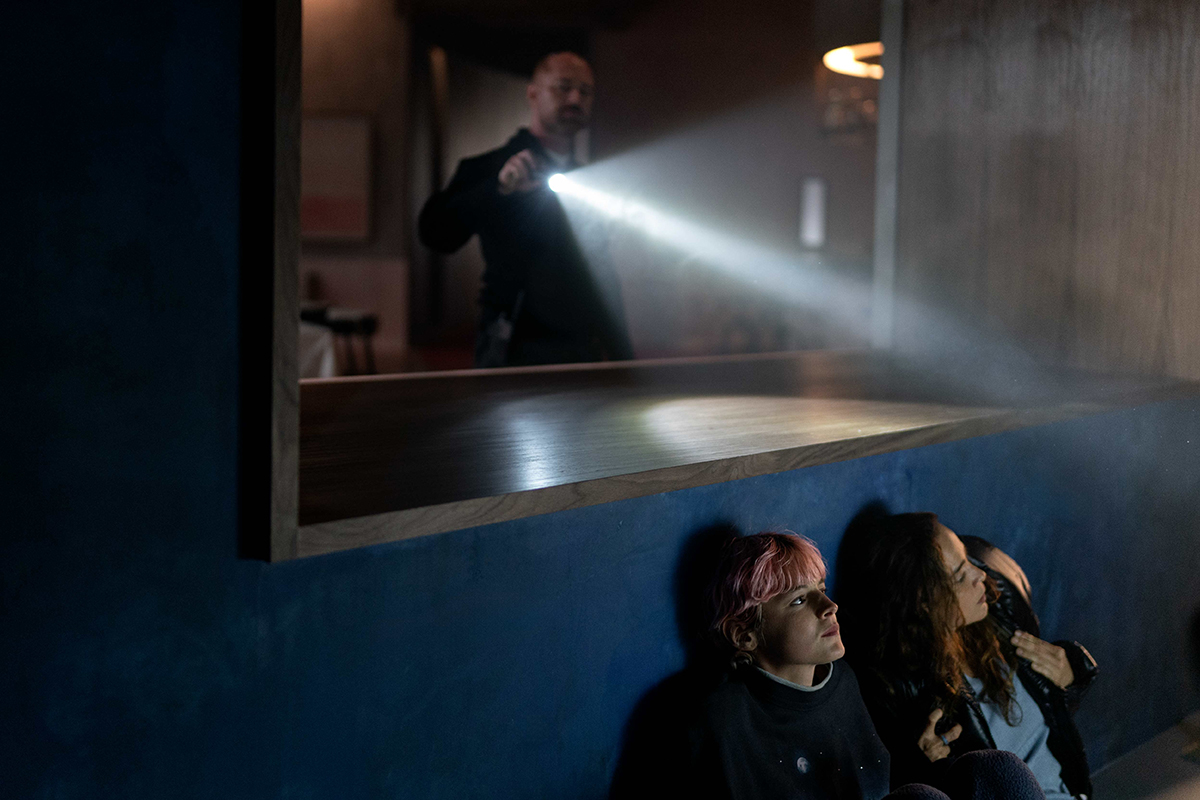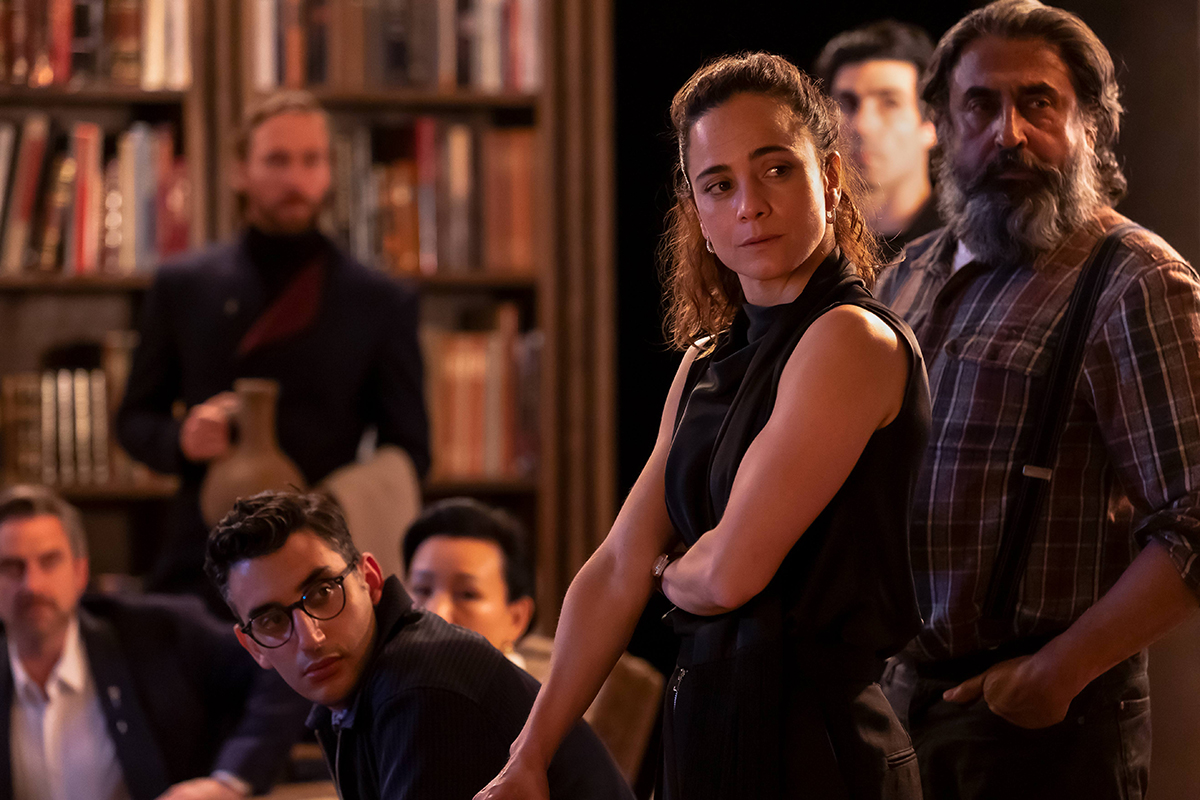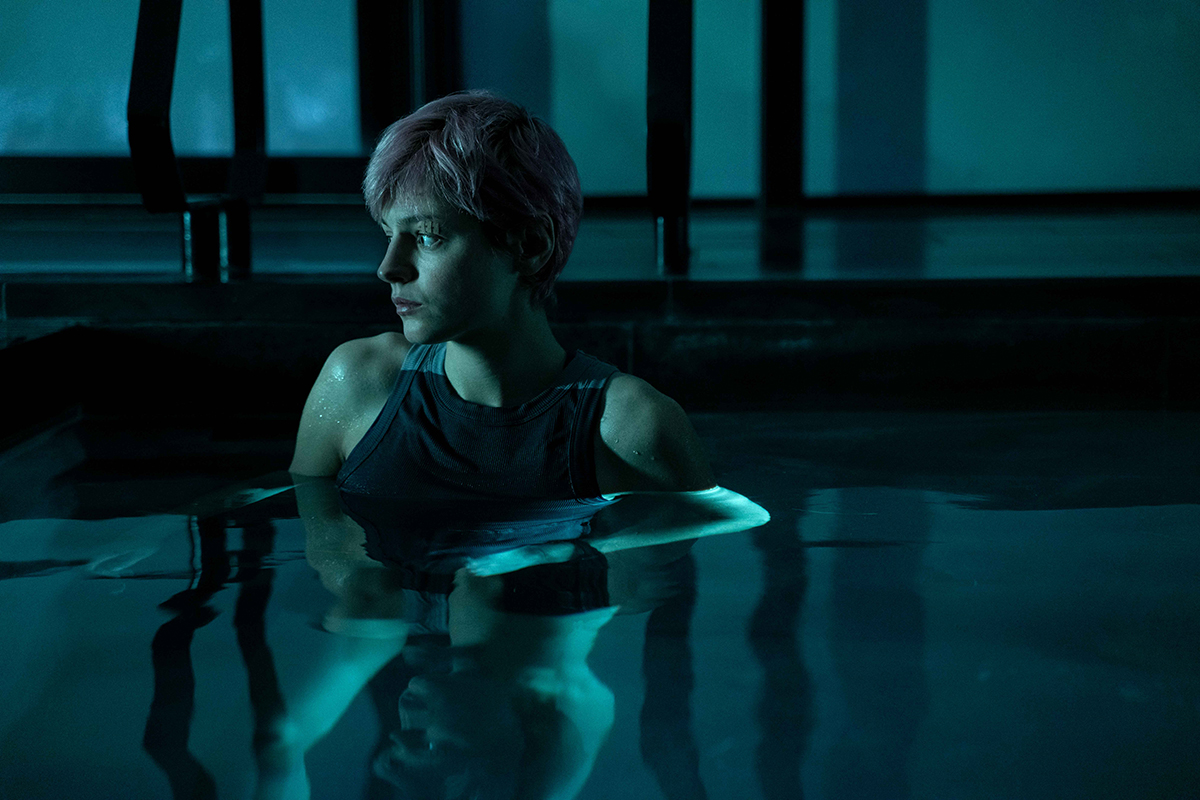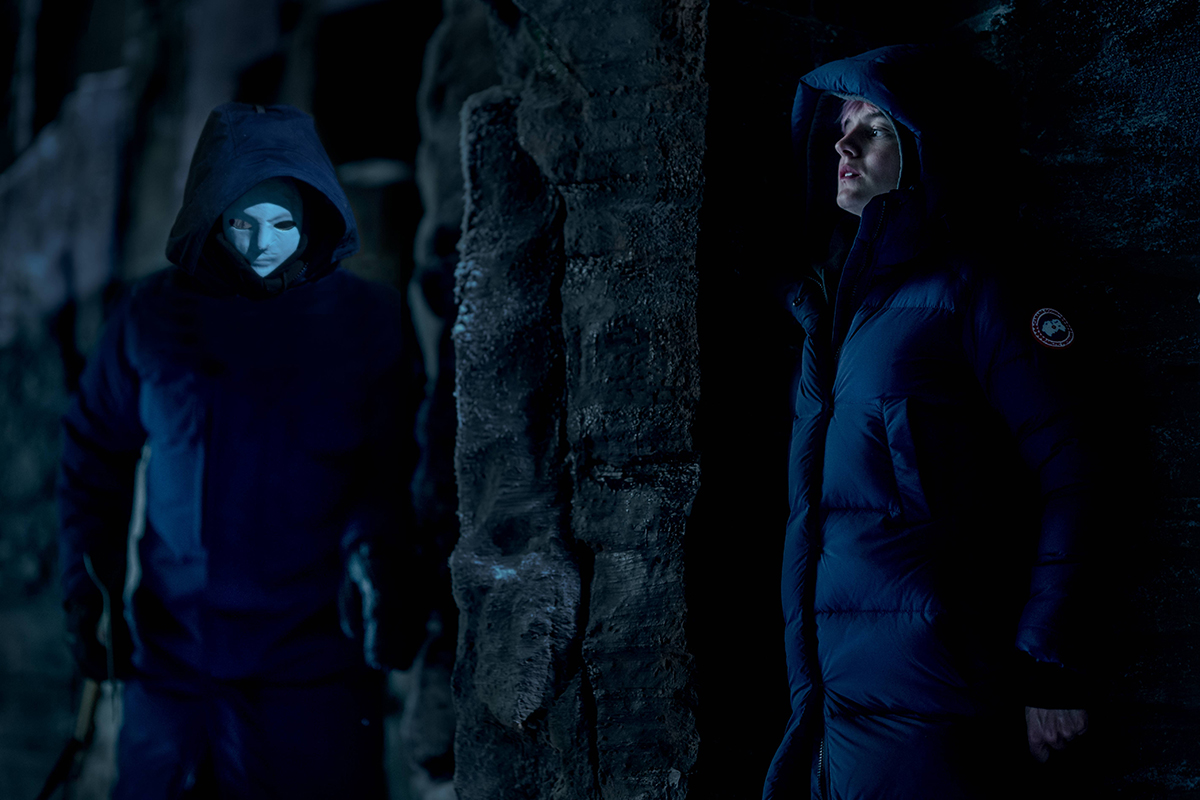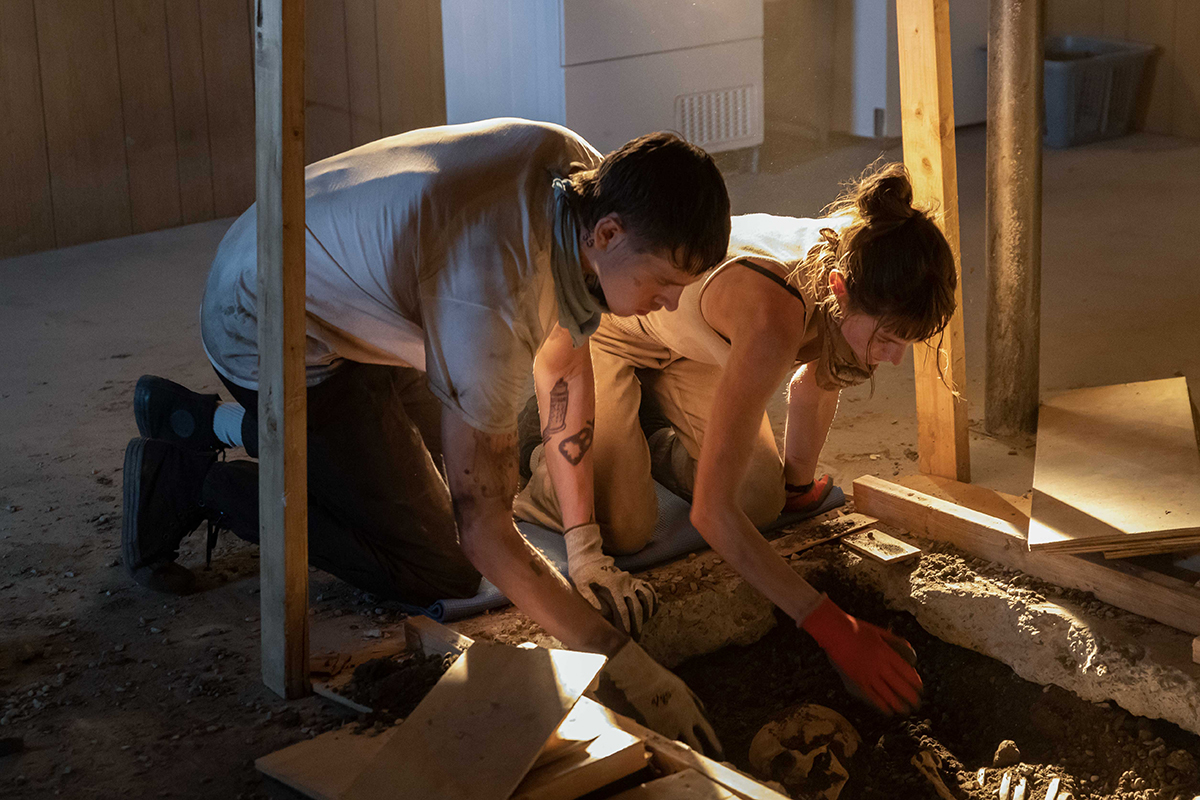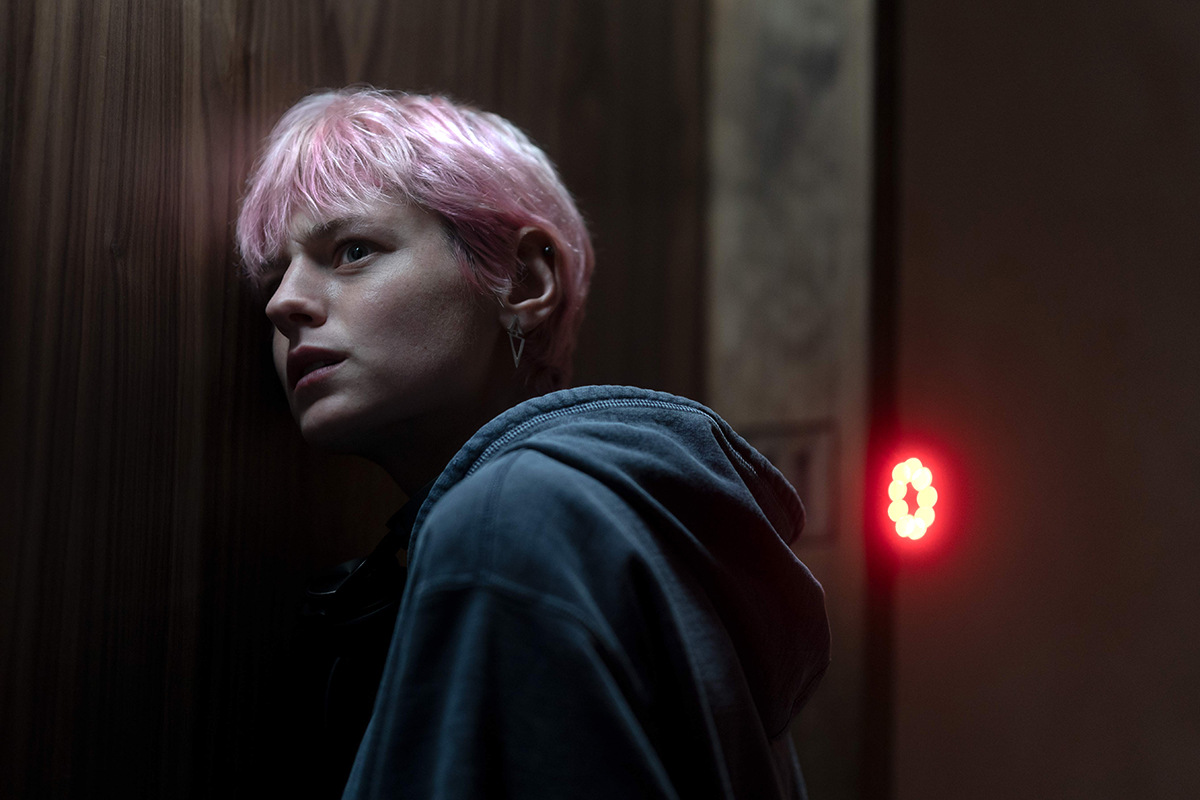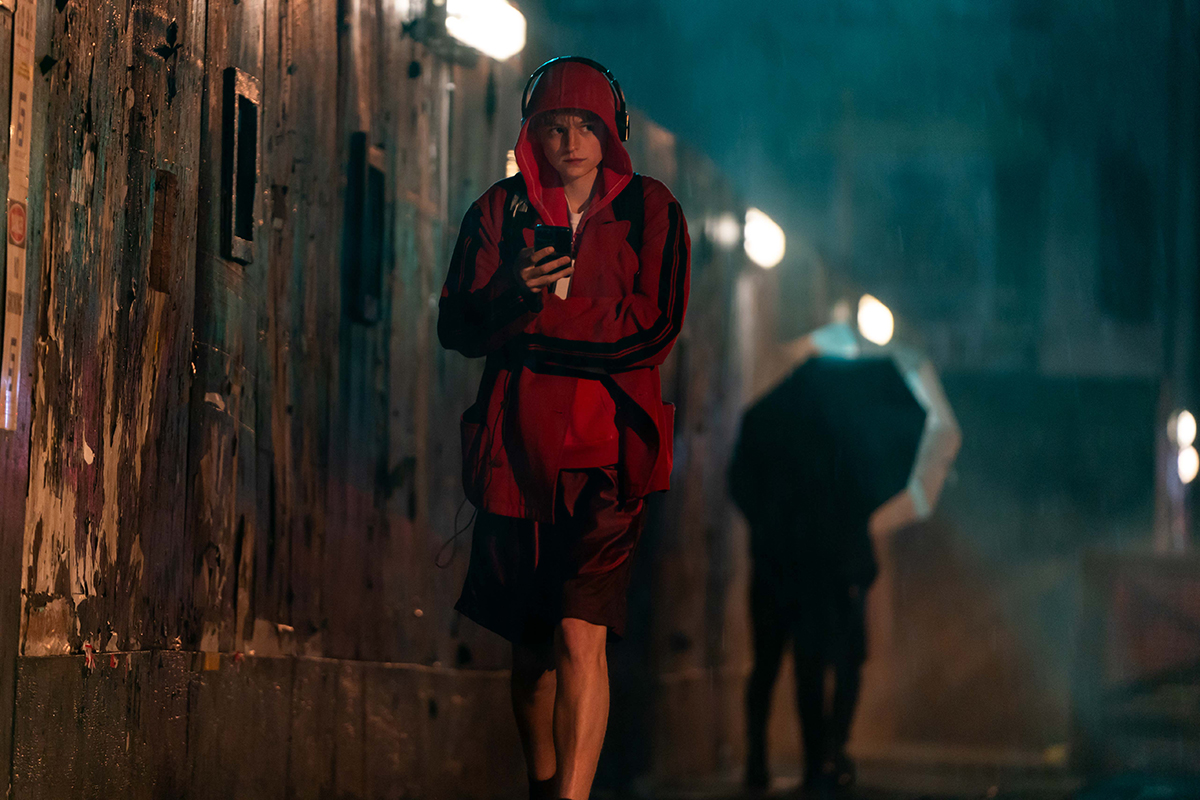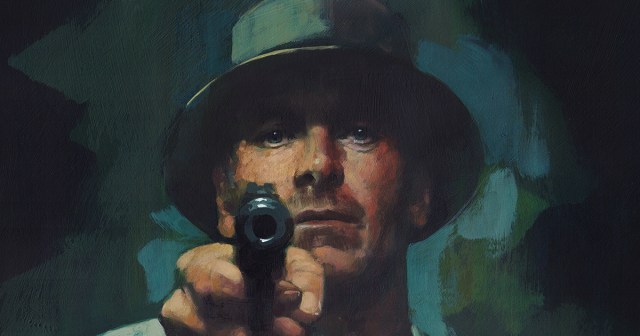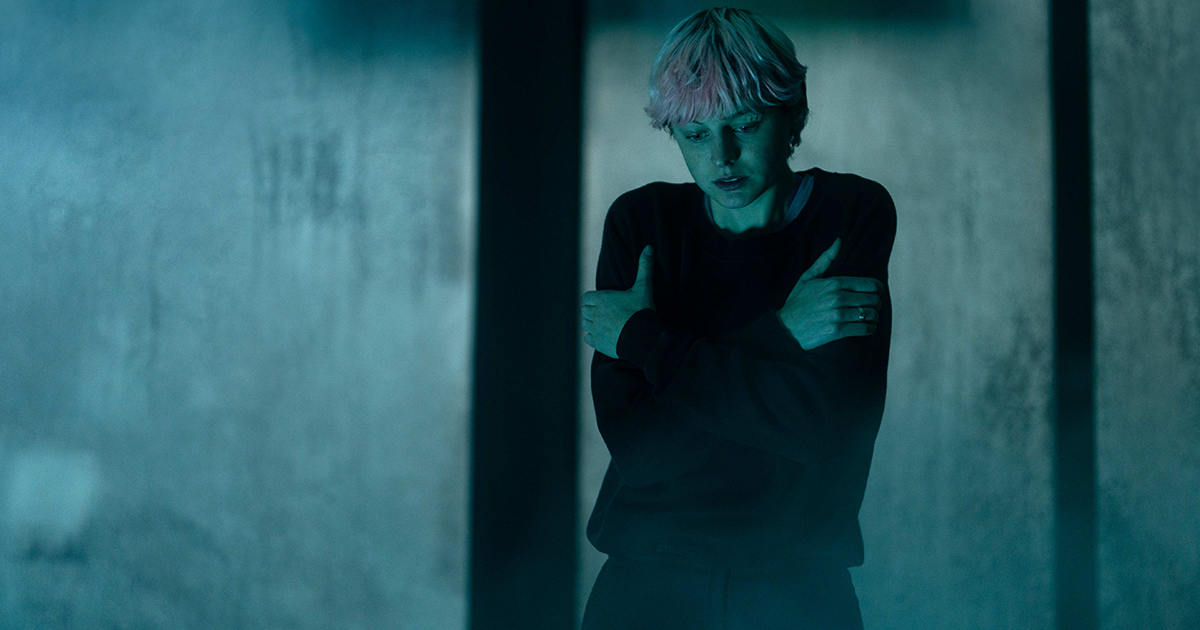
TL;DR
- Although set in a glossy, hi-tech world, the creators of FX mystery series “A Murder at the End of the World” embraced imperfection and avoided trying to fix everything in post.
- Cinematographer Charlotte Bruus Christensen, ASC talks to NAB Amplify about working with series creators Brit Marling and Zal Batmanglij.
- She shot with custom-made detuned lenses and devised LUTs for each of the three principal locations in New Jersey, Iceland and Utah.
At first glance, a murder mystery set at a remote luxury retreat for some of the world’s most influential people recalls shows like The White Lotus and Glass Onion: A Knives Out Mystery, but new seven-part FX series A Murder at the End of the World has a different spin.
“With its time-jumping structure, uniquely eerie tone and warnings about artificial intelligence and climate change, it is also unmistakably the work of the idiosyncratic creators behind Netflix series The OA, Sound of My Voice and The East,” Esther Zuckerman writes in The New York Times.
Those creators are Brit Marling and Zal Batmanglij — a creative team who’ve been together since their first short film in 2007.
Their new show — marking the first time Marling, a writer and actor, has stepped behind the camera as director — is an Agatha Christie-inflected whodunit, featuring a Gen-Z amateur detective played by Emma Corrin (Diana Spencer in The Crown).
“I knew that Brit was going to be a natural director; I just didn’t understand how much I would enjoy the experience of watching Brit direct,” Batmanglij tells The Hollywood Reporter. “Certain actors, when they get into the directing chair, just have a sensitivity. I saw Emma[Corrin] and Harris [Dickinson] bloom in certain ways when Brit was working with them, and that inspired me to want to go take acting classes.”
Marling explains, “When you’ve spent a lot of years acting, you’re really aware of what actors need to create their best work.”
Marling also co-stars as the wife of Clive Owen’s tech billionaire, who invites a motley crew of guests including an environmental activist, a roboticist and an astronaut to his Icelandic retreat, where one or more of them wind up dead.
“It was really eerie, actually, to see the number of things that, when we had set out to write it four years ago, were science fiction,” Marling told Zuckerman. “When we talked about any of this stuff with people, we had to explain what is a deepfake, what is an AI assistant, what’s a large language model — how does that work? And then by the time we were editing it, to see everything come to pass.”
Marling tells Vulture, “Directing feels like you’re taking the world-building part to its ultimate conclusion.”
READ MORE: ‘The OA’ Creators Are Back With a Murder Mystery (The New York Times)
To film their story, Marling and Batmanglij sought out acclaimed cinematographer Charlotte Bruus Christensen, ASC, who shot horror hit A Quiet Place; All the Old Knives, directed by Janus Metz Pedersen; Aaron Sorkin’s directorial debut, Molly’s Game; and Denzel Washington’s film Fences.
“At heart this is a coming-of-age story about a child of the internet who knows more how to live her life in cyberland than in the real world,” Christensen tells NAB Amplify. “The script had this larger than life quality as if the world of the internet can’t be contained or quite grasped.”
She continues, “As a teenager I remember thinking the stars were so beautiful but there was an unfathomable distance between them and me. That is how I think we all felt about the cyberworld in this story. You can’t put it into a cage.”
The Danish DP has enjoyed a long-standing relationship with director Thomas Vinterberg, which began when her own short films caught his attention. This led to Christensen’s first feature film, Submarino, which earned her a Danish Film Academy award for best cinematography. She also shot The Hunt and Far from the Madding Crowd for Vinterberg.
“From what I know, Zal loved The Girl on the Train (shot by Christensen for director Tate Taylor) but it was one of those processes where our agents got in touch. I was in New York having just shot Sharper (dir. Benjamin Caron) so we had our first meeting there and it was like first love. No one who meets Brit can fail to fall in love with her.”
Having shot a number of features back-to-back, Christensen wasn’t particularly looking for a TV project. Instead, it was the co-director’s passion and the story itself that convinced her to take the job.
The central character’s crime solving cyber skills might recall The Girl with the Dragon Tattoo by Swedish author Stieg Larsson. Christensen says their chief cinematic reference were the films of great Polish auteur Krzysztof Kieślowski, and in particular the Three Colors trilogy (1993-1994 Red, White and Blue).
“We learned a lot from Kieślowski movies and wanted to emulate that tone, something very raw yet cinematic and truthful,” she says. “It’s the way that he took simple ideas and then photographed that idea.
“In these days when you can move the camera so much, even virtually, you can have it fly through a keyhole, under a bed, through a wall; we wanted something that felt raw and which retained those happy accidents, those glitches or scratches that are evidence of something real. We wanted an analog style.”
She elaborates, “Our question to ourselves was how do we make it feel minimalist? For us, perfection was imperfection. We didn’t want to be afraid of imperfections but to embrace all the things that can go wrong and not try to fix everything in post. You really have to work hard to protect that because the instinct from your colleagues in post-production is to fix things.”
To photograph the series she selected the ARRI Alexa equipped with a set of spherical lenses from Panavision that Christensen had previously used on the three-part FX mini-series Black Narcissus — that Christensen also directed.
“The image needed to be messed up a little and these lenses added that less-than-perfect quality,” she said, explaining that Panavision’s VP of optical engineering, Dan Sasaki, “detuned the lenses to achieve a softness and vignetting to break up the digital sharpness and cleanness and push the lenses to capture a less perfect image.”
She devised LUTs for each of the three principal locations in New Jersey, Iceland and Utah. “The color contrast was important to creating an energy between scenes as we move from white ‘desert’ to ‘red desert,’” she says. “Among our first creative conversations was about how to delineate between the real world and the cyberworld.”
She approached the show “like a seven-hour movie, as one story and one journey in terms of lighting,” operating the A camera with occasional second unit work for pick-ups.
While Batmanglij and Marling swapped directorial duties on the episodes, Christensen lensed all seven over the 100-day production period.
“I love prep and being in control of what we’re doing but here I learned how to prep while shooting,” she explains. “If Zal was directing for three days than Brit would be prepping her next block of two to three days and vice versa but I was busy shooting all the time.
“So when either director came to me with a new idea that they’d thought about I had to be quick to re-evaluate. So, I learned to go and chat with the director who wasn’t directing that day in my lunch break to tap into their thoughts and to prep for the next block while shooting.”
The billionaire’s Icelandic retreat recalls the opulence of the Roy family in Succession or the forest mansion in the sci-fi feature Ex Machina. It was built on soundstages in New Jersey and presented the biggest production challenge to the DP. The budget wouldn’t allow for the build of the entire set so they built half, dressed it for half the show, and then flipped it around, dressing the other half of the hotel weeks later.
“It’s a circular hotel but we only had space to build half of it at a time so we’d shoot the one half then, with the other half of the set dressed, we’d shoot the same scenes but in the other mirrored half. We also had to connect those scenes to Iceland. We had snow on the stage to link to snow in Iceland.”
Working within a LED Volume might have solved the need to dress and redress the scale of sets but would not have delivered the analog aesthetic they desired.
While the co-creators and directors naturally sing from the same sheet, Christensen says that they were different in the way they executed things.
Making her directorial debut, “Brit is a very organized with thorough prep and previz. She needed that security while Zal allowed for a more spontaneous approach. It’s not quite improvisation but he wasn’t scared of seeing what happens on the day and reacting to that.”
Although she says that the shoot during winter and under COVID conditions in Iceland was particularly tough, Christensen wouldn’t hesitate to work with the duo again.
“Their passion for the story and the camaraderie they bring to set is something to be valued. It was a full on experience but I have to underline that Brit and Zal were an amazing team — which, trust me, does not always happen.”


